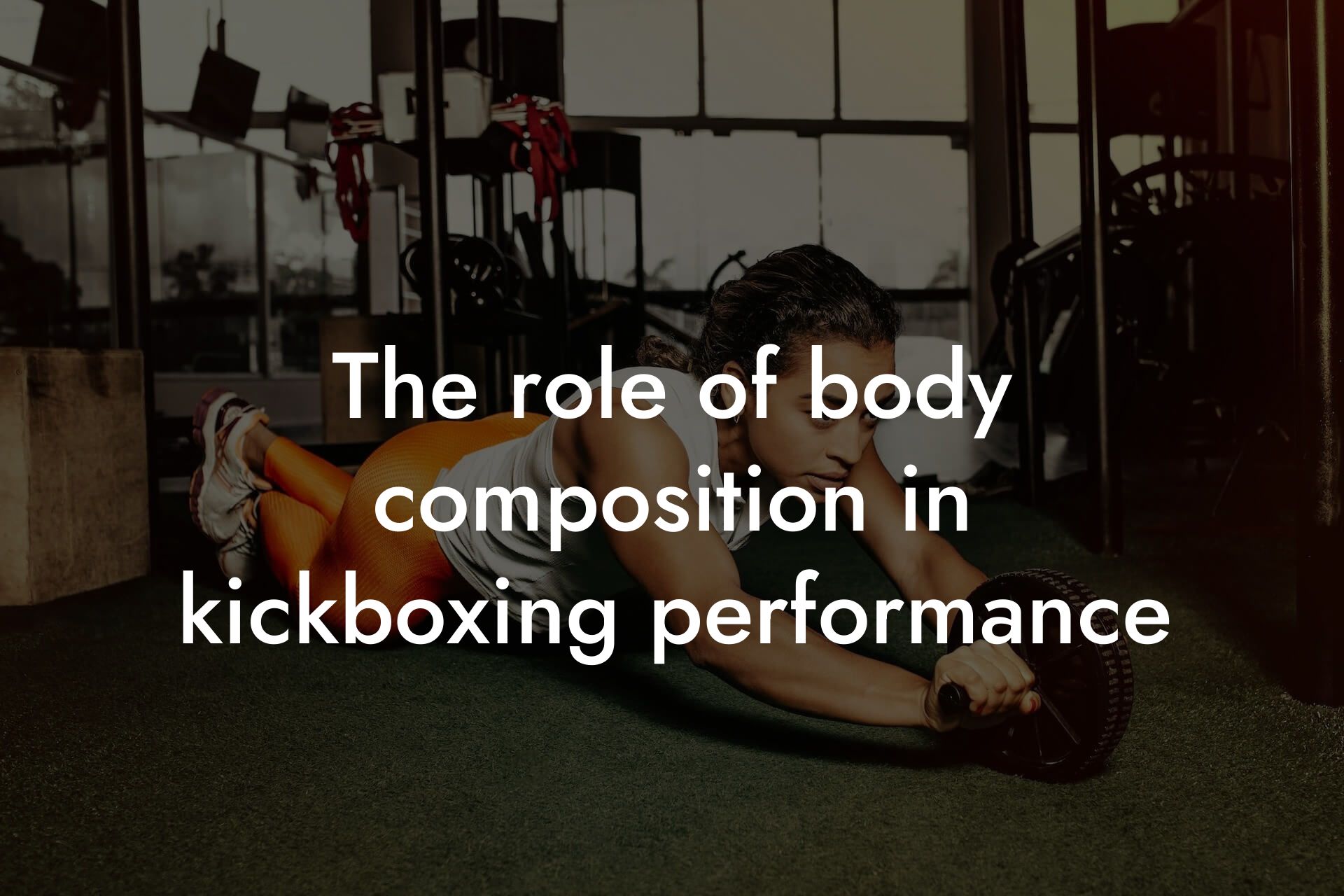As a high-earning professional, you understand the importance of physical appearance, body fat, physique, and bone density in achieving overall wellness and peak performance. Martial arts training is an excellent way to improve these aspects, but it requires a delicate balance of strength, speed, and technique. In this article, we'll delve into the intricacies of balancing these three essential components to help you optimize your martial arts training and take your physique to the next level.
Table of Contents
- Understanding the Importance of Strength in Martial Arts
- The Role of Speed in Martial Arts
- The Importance of Technique in Martial Arts
- Balancing Strength, Speed, and Technique in Training
- Incorporating Conditioning Exercises into Your Training
- Using Plyometrics and Agility Drills to Improve Speed and Power
- Incorporating Strength Training into Your Martial Arts Routine
- Periodizing Your Training for Optimal Results
- Frequently Asked Questions
Understanding the Importance of Strength in Martial Arts
Strength is a critical component of martial arts training, as it enables you to generate power, speed, and endurance. Having strong muscles, tendons, and bones is essential for executing techniques effectively and with confidence. A strong foundation in strength training can help you improve your overall performance, increase your stamina, and reduce the risk of injuries.
In martial arts, strength is not just about brute force; it's about generating power through efficient movement patterns, leveraging your body weight, and using your opponent's energy against them. A well-structured strength training program can help you develop the necessary strength to execute complex techniques, absorb impact, and maintain a strong defensive position.
The Role of Speed in Martial Arts
Speed is a crucial aspect of martial arts training, as it allows you to react quickly to your opponent's movements, execute techniques with precision, and gain a competitive edge. Speed training improves your reaction time, agility, and coordination, enabling you to move swiftly and efficiently around the mat or ring.
In martial arts, speed is not just about moving quickly; it's about moving efficiently, using your opponent's momentum against them, and creating opportunities to counterattack. A well-designed speed training program can help you develop the necessary quickness to evade attacks, create openings, and land precise strikes.
The Importance of Technique in Martial Arts
Technique is the foundation of martial arts training, as it provides the framework for executing movements, defending against attacks, and countering with precision. Proper technique ensures that you're using your body efficiently, minimizing energy expenditure, and maximizing effectiveness.
In martial arts, technique is not just about mastering individual movements; it's about integrating them into a cohesive system, understanding the underlying principles, and adapting to different scenarios. A strong focus on technique can help you develop muscle memory, improve your overall performance, and reduce the risk of injuries.
Balancing Strength, Speed, and Technique in Training
Balancing strength, speed, and technique in martial arts training is a delicate process that requires careful planning and execution. A well-structured training program should allocate time and resources to each component, ensuring that you're developing a balanced skill set.
A good starting point is to allocate 30-40% of your training time to strength training, 20-30% to speed training, and 30-40% to technique training. This ratio can vary depending on your goals, experience level, and training style. It's essential to periodize your training, focusing on specific components during different phases of your training cycle.
Incorporating Conditioning Exercises into Your Training
Conditioning exercises are an essential component of martial arts training, as they improve your endurance, increase your stamina, and enhance your overall performance. Conditioning exercises can be divided into two categories: aerobic and anaerobic.
Aerobic conditioning exercises, such as jogging, cycling, or swimming, improve your cardiovascular endurance, allowing you to sustain a high-intensity effort over an extended period. Anaerobic conditioning exercises, such as sprinting, jumping, or weightlifting, improve your explosive power, enabling you to generate rapid, high-intensity efforts.
Using Plyometrics and Agility Drills to Improve Speed and Power
Plyometric exercises, such as jump squats, box jumps, and burpees, are an excellent way to improve your explosive power, speed, and agility. These exercises involve rapid, high-intensity movements that mimic the demands of martial arts training.
Agility drills, such as cone drills, ladder drills, and shuttle runs, improve your reaction time, acceleration, and deceleration. These exercises simulate the rapid changes of direction and speed required in martial arts, helping you develop the necessary quickness and agility to evade attacks and create opportunities.
Incorporating Strength Training into Your Martial Arts Routine
Strength training is an essential component of martial arts training, as it improves your power, speed, and endurance. A well-structured strength training program should include exercises that target your entire body, focusing on functional movements that mimic the demands of martial arts.
Exercises such as squats, deadlifts, bench press, and rows are excellent for building overall strength, while exercises like lunges, step-ups, and calf raises target specific muscle groups used in martial arts. It's essential to incorporate exercises that improve your core strength, as a strong core is essential for generating power, speed, and stability.
Periodizing Your Training for Optimal Results
Periodizing your training is essential for achieving optimal results in martial arts. Periodization involves dividing your training into specific phases, each focusing on a different component of your training. This approach helps you avoid plateaus, prevent overtraining, and ensure continuous progress.
A typical periodization plan includes a hypertrophy phase, focusing on building muscle mass and strength, a strength phase, focusing on building maximum strength, and a power phase, focusing on building explosive power. Each phase should last 4-6 weeks, with a deload week in between to allow for recovery and adaptation.
Balancing strength, speed, and technique in martial arts training is a complex process that requires careful planning, dedication, and perseverance. By understanding the importance of each component, incorporating conditioning exercises, plyometrics, and agility drills, and periodizing your training, you can optimize your martial arts performance and achieve your goals.
Remember, martial arts training is a journey, not a destination. With patience, persistence, and the right guidance, you can develop the strength, speed, and technique necessary to excel in your chosen discipline and achieve overall wellness and peak performance.
Frequently Asked Questions
What is the importance of balancing strength, speed, and technique in martial arts?
Balancing strength, speed, and technique is crucial in martial arts as it enables practitioners to perform movements efficiently, effectively, and safely. When one aspect is overemphasized, it can lead to imbalances, injuries, and poor performance. By developing a harmonious balance between strength, speed, and technique, martial artists can optimize their skills and achieve their full potential.
How do I know if I'm prioritizing strength over technique?
If you find yourself relying heavily on brute force to execute movements, neglecting proper form and execution, or consistently feeling fatigued, you may be prioritizing strength over technique. Take a step back, reassess your training, and focus on refining your technique to achieve a better balance.
What are some common mistakes martial artists make when it comes to speed?
Common mistakes include sacrificing proper technique for speed, neglecting to warm up and cool down, and failing to incorporate speed training into their regular practice. Remember, speed is not just about moving quickly, but also about moving efficiently and effectively.
How can I improve my technique in martial arts?
To improve your technique, focus on breaking down complex movements into smaller components, practice slowly and deliberately, and seek feedback from instructors or training partners. Additionally, incorporate drills and exercises that target specific skills, and make adjustments as needed.
What role does flexibility play in martial arts?
Flexibility is essential in martial arts, as it enables practitioners to move freely, maintain proper form, and reduce the risk of injury. Incorporate stretching exercises into your training routine, focusing on major muscle groups such as hamstrings, quadriceps, and hip flexors.
How can I increase my strength for martial arts?
To increase strength, incorporate resistance training into your workout routine, focusing on exercises that target multiple muscle groups at once. Additionally, incorporate plyometric exercises, such as jump squats and box jumps, to improve explosive power.
What is the difference between speed and agility in martial arts?
Speed refers to the ability to move quickly, while agility refers to the ability to change direction quickly and efficiently. Both are essential in martial arts, and can be improved through specific training exercises and drills.
How can I improve my agility in martial arts?
To improve agility, incorporate exercises that challenge your ability to change direction quickly, such as ladder drills, cone drills, and shuttle runs. Additionally, practice movements that require rapid changes in direction, such as footwork and hand techniques.
What are some common injuries associated with martial arts?
Common injuries in martial arts include joint sprains, muscle strains, and overuse injuries. To minimize the risk of injury, warm up and cool down properly, incorporate injury prevention exercises into your training, and listen to your body.
How can I prevent overtraining in martial arts?
To prevent overtraining, listen to your body, take regular breaks, and incorporate rest days into your training schedule. Additionally, monitor your progress, adjust your training intensity and volume as needed, and prioritize recovery techniques such as stretching and foam rolling.
What is the importance of proper warm-up and cool-down in martial arts?
Proper warm-up and cool-down are essential in martial arts, as they prepare the body for physical activity, reduce the risk of injury, and aid in recovery. Incorporate dynamic stretching, cardio, and strength exercises into your warm-up, and focus on static stretching and foam rolling during cool-down.
How can I incorporate strength training into my martial arts practice?
Incorporate strength training exercises that target specific muscle groups, such as squats, lunges, and deadlifts, into your workout routine. Additionally, incorporate plyometric exercises, resistance band exercises, and bodyweight exercises to improve overall strength and power.
What is the role of plyometrics in martial arts?
Plyometrics, such as jump squats and box jumps, play a crucial role in martial arts, as they improve explosive power, speed, and agility. Incorporate plyometric exercises into your training routine to enhance your overall performance.
How can I improve my endurance in martial arts?
To improve endurance, incorporate cardio exercises such as running, jumping rope, and cycling into your workout routine. Additionally, practice martial arts techniques at a high intensity, and incorporate interval training to simulate the demands of a real fight.
What is the importance of mental preparation in martial arts?
Mental preparation is essential in martial arts, as it enables practitioners to stay focused, composed, and confident under pressure. Incorporate visualization exercises, meditation, and positive self-talk into your training routine to improve mental toughness.
How can I stay motivated in my martial arts training?
To stay motivated, set realistic goals, track your progress, and celebrate small victories. Additionally, find a training partner or join a martial arts community to provide support and accountability.
What are some common mistakes beginners make in martial arts?
Common mistakes beginners make include neglecting proper form and technique, overestimating their abilities, and failing to listen to their body. Remember, martial arts is a journey, and patience, dedication, and humility are essential for success.
How can I balance martial arts training with other aspects of my life?
To balance martial arts training with other aspects of your life, prioritize your goals, set realistic schedules, and learn to say no to non-essential commitments. Remember, martial arts is a part of your life, not your entire life.
What are some benefits of martial arts training for high-earning professionals?
Martial arts training offers numerous benefits for high-earning professionals, including improved physical fitness, reduced stress, and enhanced mental clarity. Additionally, martial arts training can improve discipline, focus, and confidence, translating to success in both personal and professional life.
How can I incorporate martial arts into my busy schedule?
To incorporate martial arts into your busy schedule, prioritize your training, set realistic goals, and find a training schedule that works for you. Consider training early in the morning, during lunch breaks, or in the evening, and make adjustments as needed.
What is the role of nutrition in martial arts?
Nutrition plays a crucial role in martial arts, as it provides the necessary fuel for optimal performance. Focus on consuming a balanced diet rich in protein, complex carbohydrates, and healthy fats, and avoid processed and high-sugar foods.
How can I recover from a martial arts injury?
To recover from a martial arts injury, prioritize rest, ice, compression, and elevation (RICE). Additionally, incorporate injury-specific exercises, stretching, and foam rolling into your recovery routine, and seek professional medical attention if necessary.
What is the importance of finding a qualified martial arts instructor?
Finding a qualified martial arts instructor is essential, as they can provide personalized guidance, correct technique, and prevent injuries. Research local instructors, read reviews, and observe classes before committing to a training program.
How can I track my progress in martial arts?
To track your progress, set specific, measurable, and achievable goals, and track your progress through journaling, video recording, or working with a training partner. Celebrate small victories and make adjustments as needed to stay motivated and focused.
Here are some related articles you might love...
- How DEXA scans can benefit kickboxing athletes
- The role of body composition in kickboxing performance
- Strength and conditioning programs for kickboxing
- The role of kickboxing in cardiovascular health
- Nutrition tips for martial arts practitioners
- Reducing body fat for improved speed and agility in martial arts
- Recovery strategies for kickboxers after sparring sessions
- Bone density and its role in injury prevention in martial arts
- Maintaining muscle mass and flexibility in martial arts
Zak Faulkner
Zak Faulkner is a leading authority in the realm of physical health and body composition analysis, with over 15 years of experience helping professionals optimise their fitness and well-being. As one the experts behind Tano Performance Group, Zak has dedicated his career to providing in-depth, science-backed insights that empower clients to elevate their physical performance and overall health.
With extensive knowledge of DEXA technology, Zak specializes in delivering comprehensive body assessments that offer precise data on body fat, muscle mass, bone density, and overall physique. His expertise enables individuals to make informed decisions and achieve their fitness goals with accuracy and confidence. Zak’s approach is rooted in a deep understanding of human physiology, combined with a passion for helping clients unlock their full potential through personalised strategies.
Over the years, Zak has earned a reputation for his commitment to excellence, precision, and client-focused service. His guidance is trusted by top professionals who demand the best when it comes to their health. Whether advising on fitness programs, nutritional strategies, or long-term wellness plans, Zak Faulkner’s insights are a valuable resource for anyone serious about taking their health and fitness to the next level.
At Tano Performance Group, Zak continues to lead our Content Team revolutionising how professionals approach their physical health, offering unparalleled expertise that drives real results.




